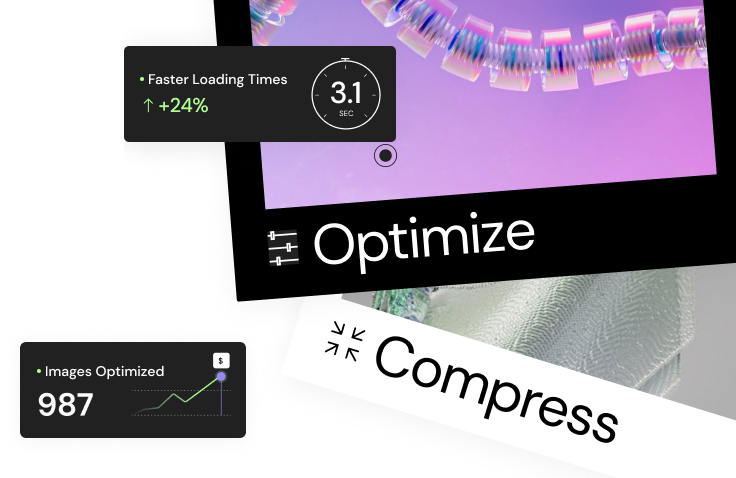Table of Contents
-
+ FAQs
But let’s be real: Starting an online store can feel like a huge mountain to climb. There’s a lot to think about—from picking the right platform to designing your website, managing your stock, and marketing your products. Many new business owners need help knowing where to start or how to stand out in a crowded market.
Don’t worry – we’re here to help. This guide breaks down the process of starting an online store into ten easy-to-follow steps. We’ll give you the knowledge and tools you need to build a thriving online business. We’ll also introduce you to Elementor, a powerful website builder that makes creating and running your online store easier.
Step 1: Find Your Niche – The Foundation of Your Online Store
With so many online stores, finding your niche is essential. It’s what helps you stand out and attract the right customers. It’s the compass that guides your business, helping you stand out from the crowd.
Why Your Niche Matters
Think of your niche as your specialty—the thing you do best. It’s where what you love meets what people want to buy. Choosing the right niche does more than narrow your focus. It attracts the right customers, helping you target people who are really interested in what you’re selling. By focusing on one area, you can become known as the go-to person for that product or service.
A well-defined niche also reduces competition. While popular markets might seem tempting, they often have tough competition. In a niche market, you can create your own unique spot. When you focus on a particular group of customers, you can often charge more for your products, which could boost your profits.
Find Your Perfect Niche
Discovering your ideal niche involves looking at what you love and what the market needs. Start by thinking about what you’re passionate about. What topics or activities do you enjoy? Your passion will keep you motivated as you build your business.
Next, consider your skills. What are you good at? What unique knowledge can you offer? Your skills will set your store apart from others. Once you have some ideas, it’s time to research the market. Check online forums, social media groups, and industry news to understand what potential customers want and need.
While it’s important to love what you do, make sure your niche can make money too. Look at the market size, competition, and pricing to ensure your chosen niche is profitable.
Test Your Niche
Before you fully commit, it’s smart to test your idea. Create a simple landing page about your niche and see if people sign up for updates. You can also run some ads on social media or search engines to reach potential customers and see how they respond.
Another good strategy is to join online communities related to your niche. Take part in relevant online groups to get feedback and insights from people who might become your customers.
Grow Your Sales
- Incredibly Fast Store
- Sales Optimization
- Enterprise-Grade Security
- 24/7 Expert Service
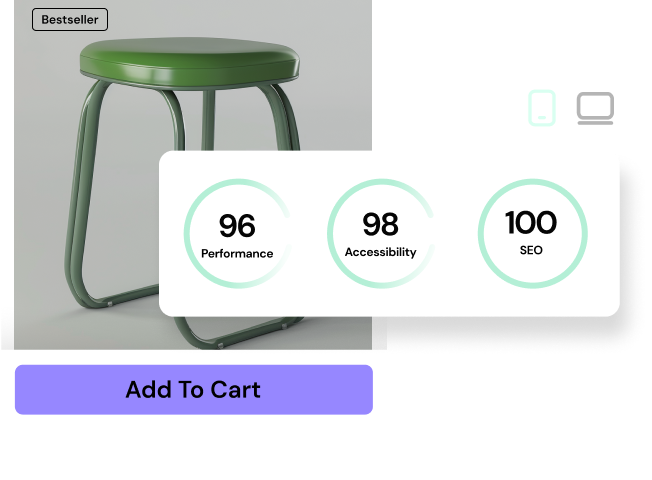
- Incredibly Fast Store
- Sales Optimization
- Enterprise-Grade Security
- 24/7 Expert Service
- Prompt your Code & Add Custom Code, HTML, or CSS with ease
- Generate or edit with AI for Tailored Images
- Use Copilot for predictive stylized container layouts
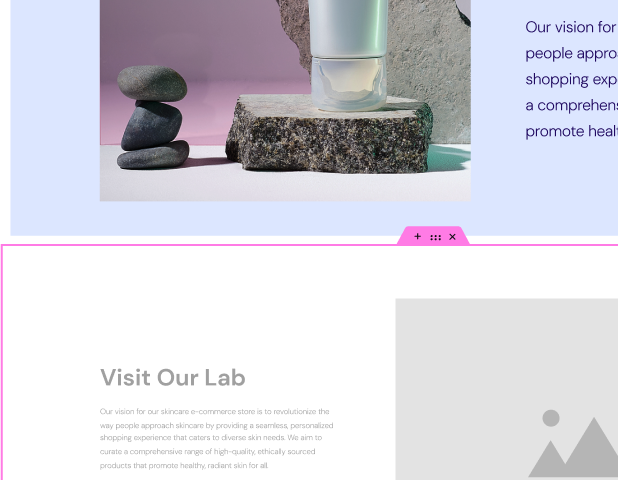
- Prompt your Code & Add Custom Code, HTML, or CSS with ease
- Generate or edit with AI for Tailored Images
- Use Copilot for predictive stylized container layouts
- Craft or Translate Content at Lightning Speed
Top-Performing Website
- Super-Fast Websites
- Enterprise-Grade Security
- Any Site, Every Business
- 24/7 Expert Service

Top-Performing Website
- Super-Fast Websites
- Enterprise-Grade Security
- Any Site, Every Business
- 24/7 Expert Service
- Drag & Drop Website Builder, No Code Required
- Over 100 Widgets, for Every Purpose
- Professional Design Features for Pixel Perfect Design

- Drag & Drop Website Builder, No Code Required
- Over 100 Widgets, for Every Purpose
- Professional Design Features for Pixel Perfect Design
- Marketing & eCommerce Features to Increase Conversion
- Ensure Reliable Email Delivery for Your Website
- Simple Setup, No SMTP Configuration Needed
- Centralized Email Insights for Better Tracking
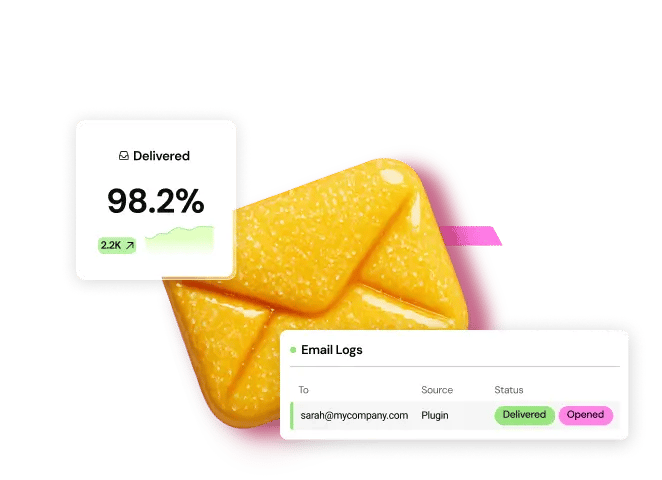
- Ensure Reliable Email Delivery for Your Website
- Simple Setup, No SMTP Configuration Needed
- Centralized Email Insights for Better Tracking
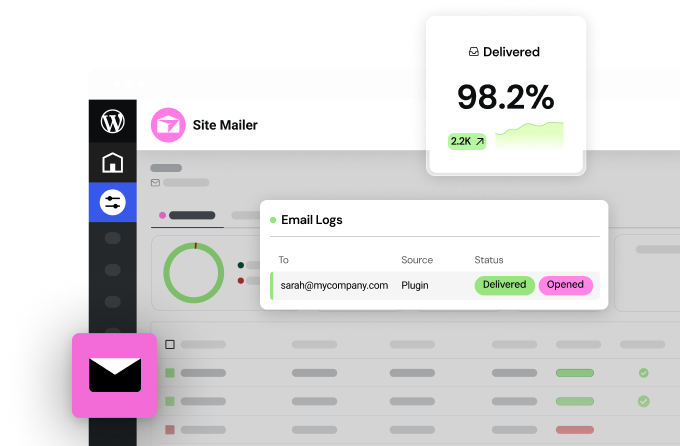
- Ensure Reliable Email Delivery for Your Website
- Simple Setup, No SMTP Configuration Needed
- Centralized Email Insights for Better Tracking
Step 2: Choose Your E-commerce Platform
Now that you know your niche, it’s time to set up your online store. Your e-commerce platform is the foundation of your business. It’s where you’ll show your products, take payments, and manage orders. Picking the right platform is crucial for a smooth-running online store.
Understanding E-commerce Platforms
There are many e-commerce platforms to choose from, each with its own strengths. Shopify is easy to use and great for beginners. WooCommerce is flexible, works with WordPress, and offers lots of customization options. BigCommerce is good for growing businesses, while Magento is powerful and suited for large businesses.
When choosing a platform, think about several factors. Consider the cost, including monthly fees, transaction fees, and any extra costs for apps or add-ons. Make sure the platform has the features you need or that you can add them easily. Choose a platform that’s easy to understand, especially if you’re new to this. Finally, pick a platform that can handle more traffic and sales as your business grows.
Elementor and WooCommerce: A Powerful Team
If you want a flexible and customizable online store, consider using Elementor with WooCommerce. Elementor is a top WordPress website builder that works perfectly with WooCommerce, the most popular e-commerce plugin for WordPress.
Elementor lets you design your store easily without needing to know how to code. It has many templates and tools to help you create unique product pages. WooCommerce handles the e-commerce basics like managing products, processing payments, and tracking orders. Together, Elementor and WooCommerce give you everything you need to build and run a successful online store.
Why Elementor Stands Out
Elementor is great for both beginners and experienced store owners. Its drag-and-drop interface makes it easy to design your store without coding. You can choose from many templates and design elements to make your store unique. Elementor works seamlessly with WooCommerce, allowing you to manage your products and payments in one place easily.
For those who want to add extra flair to their store, Elementor offers advanced design features like animations and special effects. It also helps your store load quickly, which is important for keeping customers happy and improving your search engine rankings.
By choosing Elementor and WooCommerce, you can build a beautiful, functional online store that’s easy to manage and can grow with your business. This powerful combination gives you the flexibility to create a unique shopping experience for your customers while providing the robust e-commerce features you need to succeed.
Step 3: Get Your Domain Name and Hosting
Think of your online store like a real shop. Your domain name is the street address, and hosting is the land on which it’s built. You need both to set up your store online and ensure customers can find you.
1. Pick a Good Domain Name
Your domain name is the first thing people see about your store. It’s what they type to find you online, so it’s important to choose wisely.
A good domain name matches your business, helping customers understand what you sell right away. It should also stand out – pick a name that’s easy to remember and say. Avoid names that are too common or confusing.
Before you decide on a name, check if you can use it. Websites like GoDaddy or Namecheap can help you search for available names.
2. Find a Good Hosting Provider
Your hosting provider keeps your website’s files and displays them to visitors. A good hosting provider is crucial for your store’s success. Look for one that offers speed—a slow website can frustrate customers and lose sales. Safety is also key.
When looking for a web hosting provider, consider security features like SSL certificates (which scramble data to keep it safe) and firewalls (which stop bad stuff from getting in). Reliability is also key. If your site crashes, you could lose sales, and people might stop trusting you.
Go for a provider that promises to keep your site up and running most of the time. Last but not least, consider the support they offer. When you have tech issues, you need a provider who’s quick to jump in and knows how to fix them.
Elementor’s WordPress Hosting: A Great Choice
If you’re using Elementor and WooCommerce to build your store, Elementor’s WordPress Hosting is a great option. It’s made just for WordPress websites and offers several benefits. It uses Google Cloud Platform, which means your site loads quickly. It has strong protection features to keep your store and customer data safe.
The hosting works smoothly with Elementor, making it easy to build and run your store. Plus, you can get expert help anytime from Elementor’s support team. By using Elementor’s hosting, you can be sure your online store has a strong base. It’s ready to handle lots of visitors and give them a smooth shopping experience.
How to Register Your Domain and Set Up Hosting
Okay, so now that you’ve got a handle on why domain names and hosting are such big deals, let’s dive into how to score ’em. It’s often easier than you think.
First off, let’s grab your domain name. You can use websites like GoDaddy, Namecheap, or Domain.com. Just search for the name you want, and if it’s up for grabs, follow their steps to make it yours.
Next up, you’ll need to choose your hosting plan. If you’re using Elementor, their WordPress Hosting is a solid choice. If not, look at different hosting providers. Compare what they offer, their prices, and what other customers say about them.
After you have your domain and hosting, you need to connect them. This usually means changing your domain’s nameservers to point to your hosting provider’s servers. Your domain registrar and hosting provider will give you instructions on how to do this.
Finally, if you’re not using Elementor’s hosting (which comes with WordPress already installed), you’ll need to install WordPress yourself. Most hosting providers make this easy with one-click installation tools.
Once you’ve got your domain and hosting set up, you’re ready to start building your online store. Remember, this foundation is super important for your store to succeed, so take your time and pick the best stuff. With a catchy domain name and a hosting provider you can trust, you’re already off to a great start in the wild world of online shopping.
Step 4: Design Your Online Store – Creating a Great Shopping Experience
When you’re selling online, how your store looks really matters. Your store’s design is like a virtual shop window. It shapes how customers see your brand and interact with your products. A well-designed store not only catches the eye but also helps guide shoppers through their buying journey. This can lead to more sales and happier customers.
Making Your Store Easy to Use
User experience (UX) is all about how people interact with your online store. From the moment they land on your homepage to when they finish buying, every step matters. A good UX builds trust, encourages people to look around, and helps turn visitors into buyers.
Here are some key things to think about:
- Easy Navigation: Make it simple for customers to find what they want. Use clear menus, categories, and a good search function.
- Eye-Catching Layout: Create a layout that looks good and shows off your products and brand.
- Attractive Product Pages: Use high-quality photos, helpful descriptions, and clear “Buy Now” buttons to make people want to buy.
- Mobile-Friendly Design: Make sure your store works well on phones and tablets. Many people shop on mobile devices these days.
- Fast Loading: A slow website can frustrate visitors and make them leave. Make your store load quickly for a smooth experience.
By focusing on these points, you’ll create an online store that looks good and is easy to use. This will leave a good impression on your customers and keep them coming back.
Key Parts of a Good Online Store Design
A well-designed online store does more than just look nice. It uses smart design to guide customers and encourage them to buy. Here are some important elements:
- Clear Homepage: Your homepage should quickly show what your brand offers and display your best products.
- Easy-to-Use Menu: A well-organized menu helps customers explore your products and find what they need.
- Attractive Product Pages: Use great photos, detailed descriptions, and customer reviews to show your products in the best light.
- Visible “Buy” Buttons: Place clear “Buy Now” or “Add to Cart” buttons where customers can easily see and click them.
- Simple Checkout: Make the buying process quick and easy to encourage customers to complete their purchase.
- Trust Builders: Show security badges, customer reviews, and other signs that help customers trust your store.
Using Elementor to Make Your Store Look Great
Elementor is a tool that makes designing your online store much easier. You can drag and drop elements to create great-looking pages without needing to know how to code. With Elementor, you can:
- Choose from many pre-designed templates for different types of stores.
- Customize every part of your design, from fonts and colors to layouts and animations.
- Add interactive features like image sliders, customer reviews, and social media feeds.
- Create product pages that show off your items and encourage people to buy.
Elementor allows you to design a store that fits your brand and appeals to your customers. It’s easy to use, whether you’re new to design or have extensive experience.
Making Your Store Work Well on Mobile Phones
Nowadays, a lot of people are shopping on their phones, so it’s essential to make sure your online store is mobile-friendly. Elementor makes this easy by allowing you to customize your design for different screen sizes. You can change the layout, font size, and what elements appear on mobile devices to ensure your store looks great and works smoothly on any device.
Making Your Store Accessible to Everyone
It’s important to make sure everyone can use your store, including people with disabilities. This is not just good for business; it’s often required by law. Here are some things to consider:
- Add text descriptions to images for people who use screen readers.
- Make sure people can navigate your store using just a keyboard.
- Use colors that are easy to see for people with color blindness.
- Write in clear, simple language that everyone can understand.
By making your store accessible, you welcome all customers, regardless of their abilities.
Making Your Store Fast
A fast website is crucial for online stores. Studies show that 47% of users expect a website to load in under two seconds. If your site is just one second slower, you could lose 7% of your sales.
Elementor helps make your store fast with features like:
- Clean, efficient code that helps your site load quickly.
- Smart ways to load images and videos without slowing down your site.
- Faster font loading.
- Loading certain features only when they’re needed.
Using these features, you can ensure that your online store loads quickly. This gives customers a better experience and can help increase your sales.
Step 5: Create Eye-Catching Product Listings
Your product listings are the core of your online store. They’re where customers find your products, learn about them, and decide to buy. Making great product listings that grab attention and make people want to buy is key to boosting sales and growing your business.
Take Great Product Photos
Good pictures can make a big difference in selling your products. High-quality photos show off your items in the best way and make people want to buy them.
Try to get professional product photos or learn how to take good pictures yourself. Make sure your photos are bright and clear and show your products accurately. It’s a good idea to include several photos from different angles so customers can see the whole product.
Write Convincing Product Descriptions
Great photos grab attention, but a killer description is what seals the deal. A good description doesn’t just rattle off a list of features; it shows how the product will make your life better and tug at your heartstrings.
When you write product descriptions:
- Be Clear and Brief: Use simple language to describe your product’s features and benefits. Avoid complicated terms that might confuse customers.
- Focus on Benefits: Instead of just listing features, explain how those features will make the customer’s life better or easier.
- Appeal to Emotions: Use vivid language to help customers imagine themselves using and enjoying your product.
- Use Keywords: Include relevant words that people might use to search for your product. This can help your store show up in search results.
By combining great photos with convincing descriptions, you can create product listings that turn visitors into loyal customers.
Make Your Images Load Faster
Large image files can slow down your website, which can frustrate users and hurt your search engine rankings. Elementor’s Image Optimizer is a tool that can help you shrink your images without making them look bad.
With this tool, you can:
- Shrink different types of images (like WebP, PNG, JPEG, and GIF)
- Choose how much to compress the images
- Shrink many images at once or do it automatically
- Remove extra data from image files to make them even smaller
By using Elementor’s Image Optimizer, you can make your store load faster, which makes for a better user experience and can help your store rank higher in search results.
Organize Your Products Well
A well-organized store makes it easy for customers to find what they want. Group your products into categories based on their characteristics, appearance, or uses. You can also create collections of related items.
Use clear, descriptive names for your categories and collections, and make sure they’re easy to find in your store’s menu. This helps customers move around your store easily and find products they’re interested in.
Price Your Products Smart
Setting the right prices for your products is crucial for attracting customers and making a profit. Think about:
- How much it costs to make your products
- What prices your competitors are charging
- How valuable your product is to customers
- How much profit do you need to make
Try different pricing strategies, such as offering discounts for buying multiple items or running limited-time sales, to see what works best with your customers.
Keep Track of Your Inventory
Managing your inventory well is important to make sure you have enough products to sell without having too much leftover stock. Keep an eye on how much of each product you have, set points at which to order more, and consider using software to help manage your inventory.
By monitoring your inventory, you can avoid running out of products, fulfill orders quickly, and keep your customers happy.
Step 6: Set Up Payment and Shipping
You’ve got a great-looking online store and product listings that catch the eye. Now, it’s time to handle the practical side of selling online: payments and shipping. These parts are crucial for making sure customers can buy from you easily and securely, which builds trust and increases sales.
Choose a Payment Gateway
A payment gateway is like a bridge between your online store and your customer’s bank. It processes payments securely and moves the money. Picking the right payment gateway is important for giving customers a smooth checkout experience and keeping their financial information safe.
There are several popular payment gateways to choose from:
- PayPal: Widely known and trusted, it offers protection for buyers and sellers.
- Stripe: Easy for developers to work with, offers customizable checkout options and low fees.
- Square: An all-in-one solution for payments, point-of-sale, and inventory management.
- Authorize.Net: A secure and reliable option with tools to prevent fraud.
When choosing a payment gateway, think about the following:
- How much do they charge per transaction
- What types of payment do they accept (credit cards, debit cards, digital wallets)
- How secure they are
- How easy they are to set up with your online store
Set Up Secure Payments
It is very important to keep your customers’ financial information safe. Make sure your payment process follows PCI (Payment Card Industry) rules for data security. Choose a payment gateway that encrypts information and has tools to prevent fraud.
Show trust badges and security seals on your checkout page to reassure customers that their information is safe. Use multi-factor authentication and other security measures to protect your store from unauthorized access.
Set Up Shipping Options
Shipping is a big part of selling online. Offering convenient and affordable shipping options can make customers happy and encourage them to buy from you again.
When setting up shipping, think about the following:
- Shipping Companies: Choose reliable companies like USPS, FedEx, or UPS that offer good rates and package tracking.
- Shipping Methods: Offer different options, like standard, fast, and international shipping, to meet different customer needs.
- Shipping Costs: Calculate costs based on package weight, size, and where it’s going. Consider offering free shipping for orders over a certain amount to encourage bigger purchases.
- Packaging: Use good quality packaging to protect your products during shipping. Clearly tell customers how long it will take to process their order.
Calculate Shipping Costs Accurately
Getting shipping costs right is important for keeping customers happy and avoiding loss. Overcharging for shipping can turn customers away, while undercharging can eat into your profits.
Use shipping calculators provided by shipping companies or shipping plugins that work with your online store to calculate costs automatically.
Handle Returns and Refunds Well
Even with great products and services, sometimes customers will want to return items or get refunds. Having a clear and customer-friendly return and refund policy can build trust and set clear expectations.
Explain your return and refund policy clearly on your website. State how long customers have to return items, what condition they should be in, and if there are any fees for returns. Make the return process as simple as possible for customers, giving clear instructions and prepaid return labels if you can.
Consider International Shipping
If you plan to sell to other countries, be aware that it can be more complicated. Think about:
- Customs and duties: Learn about the rules and fees for sending your products to different countries.
- Shipping restrictions: Some products might not be allowed in certain countries.
- Currency conversion: Offer prices in different currencies to make it easier for international customers to shop.
- Language and cultural differences: Adapt your website and marketing to suit different languages and cultures.
By thinking carefully about these practical aspects and setting them up well, you can make your online store run smoothly, keep customers happy, and set yourself up for success.
Remember, making it easy and secure for customers to buy from you is key to building trust and creating long-term customer relationships.
Step 7: Market Your Online Store
Your online store is ready for customers, but how will they find it? The internet is huge, and good marketing is key to getting visitors, sparking interest, and making sales. Let’s look at some ways to market your online store effectively.
Why Marketing Matters for Online Stores
Marketing isn’t just about flashy ads or clever slogans. It’s about connecting with people who might buy from you, building relationships, and making your brand the one they think of first.
Good marketing can help you make more people know about your brand, get more visitors to your website, turn visitors into paying customers, and keep customers coming back. In the busy world of online selling, good marketing helps you stand out and succeed in the long run.
SEO: Help People Find You Online
When people search for products like yours, you want your store to show up at the top of the search results. This is where Search Engine Optimization (SEO) comes in. SEO means making your website and content better so search engines like Google show higher results. It takes time and effort, but it can bring a lot of visitors to your store for free.
There are three main parts of SEO. First, there’s on-page SEO, which means making your website easy for search engines to understand. Use words people might search for in your product titles, descriptions, and image descriptions.
Second, off-page SEO involves getting other good websites to link to yours. This makes search engines think your site is trustworthy. Lastly, technical SEO ensures your website works well. It should load fast, look good on phones, and be secure.
Social Media Marketing: Connect with Customers
Social media is a great way to connect with people who might buy from you. You can show off your products and talk directly to customers. Choose social media sites that fit your products and the kind of customers you want to reach.
You can run contests or giveaways to get people excited, work with influencers to reach more people, use paid ads to target specific groups of people, and share photos and reviews from your customers. Remember to talk back to people who comment or message you. This helps build a community around your brand.
Email Marketing: Keep in Touch and Make Sales
Email is still one of the best ways to reach customers directly. Build a list of email addresses by offering something in return, like a discount or special content. Then, send emails to promote new products, share helpful information, and offer special deals. Group your email list based on what customers like or how they act.
This lets you send messages that really speak to each person. Use automatic emails to welcome new customers, remind people about items left in their cart, and follow up after a purchase. By building a good email list and sending interesting emails, you can keep customers loyal, get them to buy again, and boost your sales.
Step 8: Provide Great Customer Service
In online selling, where there’s lots of competition and customers expect a lot, great customer service is really important. It’s not just about fixing problems. It’s about making customers happy so they trust you, stay loyal, and tell others about you.
How Customer Service Affects Your Brand
How you treat your customers can make or break your brand’s reputation. If one customer has a bad experience, they might tell others on social media or review sites. This can hurt your brand and scare away potential customers.
But great customer service can turn happy customers into big fans who rave about your brand and tell others to buy from you. Good service can also make customers buy more from you over time, make people think better of your brand, and keep customers from switching to other stores.
What Makes Good Customer Service
Good customer service is more than just answering questions and handling complaints. It’s about making customers feel valued and appreciated. Answer customer questions and complaints quickly, ideally within a day. Do more than the bare minimum to help customers, even if it’s not part of your usual policies.
Show that you understand and care about customer concerns. Take charge of issues and work hard to find solutions that make the customer happy. Keep customers informed about their orders, shipping updates, and any possible delays.
Ways to Talk to Customers
Offer different ways for customers to reach you. Have a special email address for customer questions and answer quickly. Consider offering real-time help through chat on your website.
Give a phone number for customers who prefer to talk to someone. Keep an eye on your social media accounts for customer questions and respond quickly.
Handling Customer Questions and Complaints
Even with your best efforts, customers will sometimes have questions or complaints. How you handle these can really affect how satisfied and loyal customers are. When dealing with customer concerns, listen carefully to understand the issue.
Say sorry if a mistake was made. Work with the customer to find a solution. Check back later to make sure they’re happy with the outcome.
Building Customer Loyalty
In online selling, getting new customers is just the start. Real success comes from keeping customers coming back again and again. Loyal customers not only keep buying from you, but they also tell others about your products.
To build customer loyalty, personalize your marketing and product suggestions based on what customers like and have bought before. Consider creating reward programs that give repeat customers special discounts, early access to new products, or points they can use for future purchases.
Keep up great communication by informing customers about their orders, shipping, and any new products or sales. Try to build a sense of community around your brand through social media, customer forums, or special events.
Going Above and Beyond
In a crowded market, it’s the little things that can make a big difference. Doing more than customers expect can leave a lasting impression and build real loyalty. Consider writing thank-you notes by hand to include with orders.
You might surprise customers with unexpected free gifts or special offers. Try suggesting products based on what customers have bought or looked at before. Give loyal customers early access to new products or sales.
Step 9: Use Elementor AI to Work Smarter
When you run an online store, you wear many hats. You manage stock, market your products, and help customers. It can be overwhelming. Luckily, technology can help. Elementor AI is a set of tools that can make your work easier and faster. This lets you focus on what’s most important: growing your business.
What is Elementor AI?
Elementor AI is like a smart assistant built into the Elementor website builder. It helps with tasks like writing content, designing your site, and making images look better. It can write content quickly, help with design, and make images load faster.
You can use it to write product descriptions, catchy headlines, and blog posts in just a few clicks. It can suggest layouts, color schemes, and fonts to make your store look good. Plus, it can automatically shrink images without making them look bad, so your website runs better.
Elementor AI is meant to help you work smarter, not harder. It does repetitive tasks and gives smart suggestions, so you have more time to make big decisions and grow your business.
Writing Made Easy
Writing good product descriptions, blog posts, and ads can take a lot of time and be hard. Elementor AI can help you get past writer’s block and create good content much faster.
You can use it to write product descriptions by telling a few things about your product. It will then write a description that shows off its features and benefits. It can also create catchy headlines that grab attention and make people want to click.
For blog posts, you can use it to outline posts, write introductions, or even create whole articles about topics in your field.
Remember, Elementor AI isn’t meant to replace your creativity. Use it as a starting point, then add your own style to make the content truly yours.
Design Help
Making a good-looking online store can be tough if you’re not a professional designer. Elementor AI can help you make smart design choices and create a store that looks great. It can help you choose layouts by suggesting designs that look balanced and are good for making sales when you input your content.
It can also help you pick colors by giving ideas for color combinations that match your brand and look good together. When it comes to fonts, it can suggest options that are easy to read and fit your brand’s style.
These tools let you try different design ideas and create a store that looks good and works well.
Making Images Better
Pictures are very important for online stores, but big image files can slow down your website and annoy visitors. Elementor AI can help you find the right balance between good-looking images and a fast website. It can shrink images automatically, making image files smaller without making them look worse, so your website loads faster.
It can also resize and crop images, changing their sizes and shapes to fit your design perfectly. Additionally, it can improve image quality, making images clearer and sharper using smart computer programs.
By using Elementor AI to improve your images, you can make your online store look great and load quickly, giving customers a better experience.
The Future of AI in Online Stores
As technology keeps improving, AI will become even more important for online stores. We might see things like chatbots that help customers instantly or AI that suggest products based on what customers like.
Elementor is always working on new AI features to help online store owners. Keep an eye out for new trends like voice shopping, where people use voice assistants like Amazon Alexa or Google Assistant to shop online.
AR and VR technologies are also emerging, letting customers see products in their own space or try them on virtually. AI can also help make shopping experiences more personal, suggesting products based on what each customer likes.
By using AI and keeping up with these trends, you can ensure that your online store stays competitive as e-commerce changes.
Step 10: Launch and Grow Your Online Store
You’ve done the hard work of setting up your store, making it look good, and adding your products. Now it’s time for the big moment: launching your store.
But your job still needs to be done after you launch. You need to keep working to help your store grow and reach more people. Let’s look at the final steps to make your online store successful.
Getting Ready to Launch
Before you show your store to the world, it’s important to check everything one last time. Test your website by clicking through every page and making sure everything works on different devices and web browsers. Check all your writing, looking over your product descriptions and other text to make sure everything is correct.
Set up tracking by installing a tool like Google Analytics to watch how your store is doing and learn about your visitors. Check payment and shipping settings to ensure your payment system is connected and your shipping options are set up right.
Finally, prepare your stock by making sure you have enough products to fill your first orders.
Telling People About Your Store
Opening your online store is exciting, so celebrate it! Create some excitement and attract your first customers with a well-planned opening. Post on social media to tell your followers about your new store and invite them to check it out. If you have an email list, send a message announcing your launch and offer a special discount.
Consider working with influencers in your field who have a lot of followers to reach more potential customers. Try paid ads on social media or search engines to bring people to your store when you launch. If your products or store ideas are newsworthy, think about sending a press release to local news or industry publications.
The key is to create excitement about your launch so people want to visit your store and see what you’re selling.
Looking at How Your Store is Doing
Once your store is open, it’s important to watch how it’s doing and gather information to understand what customers are doing and where you can improve. Use tools like Google Analytics to track things like how many people visit your store, what percentage of visitors buy something, how much people usually spend when they buy, and how many people leave your site after only looking at one page.
By looking at this information, you can learn about what your store does well and what needs to be better. Use this data to make smart decisions about your marketing, what products you offer, and how to improve customer experience.
For example, if you notice many people leaving a certain product page quickly, you might need to make that page clearer or more interesting. Or if only a few people are buying a certain product, you might need to change its price or improve its description.
Growing Your Store
Launching your store is just the beginning. To be successful in the long run, you need to focus on growth. This means adding new products to appeal to more people and increase sales.
Try reaching new markets by selling on other platforms or to customers in other countries. Keep improving your marketing strategies based on what you learn from your data. As your business grows, think about hiring people to help with customer service, filling orders, and other tasks.
Growing your store takes careful planning and hard work. Focus on building a strong foundation, giving customers great experiences, and being ready to change as the world of online selling changes. If you stay flexible, make decisions based on data, and always put your customers first, you can help your online store keep growing and be successful for years to come.
Keeping Up with Changes in Online Selling
The world of online selling is always changing. New trends and technologies pop up all the time. To do well in this changing world, you need to stay up-to-date and change your plans when needed. Here’s how you can do that:
- Keep learning: Read about the latest trends in online selling, watch webinars, and talk to other store owners to learn new things.
- Try new things: Feel free to test new marketing ideas, products, or website features.
- Listen to customers: Listen to what your customers say and use their feedback to improve your store.
- Be ready to change: Be prepared to change your plans if the market or what customers want changes.
By always learning and being ready to change, you can make sure your online store stays successful for a long time.
Wrapping Up: Your Online Store Journey Begins
Starting an online store is exciting. It has challenges but also lots of opportunities. By following these ten steps and using tools like Elementor, you can start your online store with confidence.
Remember, building a successful online store takes time and hard work. You need to be willing to learn and change. Feel free to try new things, use new technologies, and, most importantly, listen to your customers.
Key Points to Remember
- Find your special area to sell in
- Pick the right platform to build your store on
- Make your store look good
- Show off your products well
- Make it easy for customers to pay and get their items
- Market your store to the right people
- Give great customer service
- Use AI to work smarter
- Make a big splash when you launch
- Keep growing your business
How Elementor Can Help?
Throughout this guide, we’ve talked about how Elementor’s tools can help you build and run your online store. From its easy-to-use website builder to its AI features and hosting options, Elementor gives you everything you need for your online store.
As you start this exciting journey, remember you’re not alone. Elementor has a big community and a team ready to help you. So take that first step, try out Elementor, and start your online store. The world of online selling is waiting for you!
FAQs
Here are some questions that people often ask when starting an online store:
How much does it cost to start an online store?
The cost can vary a lot. It depends on things like what platform you use, where you host your website, how you design it, how much you spend on marketing, and where you get your products.
You can start with a small budget using free or cheap tools like Elementor. As your business grows, you might need to spend more on extra features, tools, and marketing.
Do I need to register a business to start an online store?
The rules for this depend on where you live and what kind of business you’re starting. In many cases, it’s a good idea to register your business.
This can protect your personal money and make your business look more official. It’s best to talk to a lawyer or accountant to understand what you need to do in your area.
How do I find suppliers for my products?
There are several ways to get products for your store:
- Dropshipping: Work with suppliers who keep the products and ship them for you. You focus on marketing and sales.
- Wholesale: Buy products in large amounts from makers or distributors at lower prices.
- Make your own products: Create unique items that fit your brand.
- Print-on-demand: Work with companies that print and ship custom-designed products when customers order them.
Look into different suppliers, compare their prices and terms, and choose ones that fit your business plan and budget.
How do I get people to visit my online store?
Getting visitors to your store takes many different efforts. Try these marketing strategies:
- SEO: Make your website easy for search engines to find.
- Social media: Talk to people on social media and show off your products.
- Email: Build a list of email addresses and send messages to turn readers into customers.
- Paid ads: Use things like Google Ads and social media ads to reach more people.
- Content marketing: Create helpful content that attracts people interested in your products.
How do I give great customer service?
Great customer service means being quick to respond, helpful, and understanding. Make it easy for customers to contact you through email, chat, or phone.
Answer questions quickly and handle any problems in a professional and caring way. Try to do more than customers expect to create a good experience that makes them want to come back and tell others about your store.
We hope to give you the knowledge and confidence to start your online store. Remember, starting an online store is a learning process, and you’ll face challenges along the way.
But if you work hard, keep trying, and use the right tools, you can achieve your dreams and build a successful online business.
Looking for fresh content?
By entering your email, you agree to receive Elementor emails, including marketing emails,
and agree to our Terms & Conditions and Privacy Policy.

